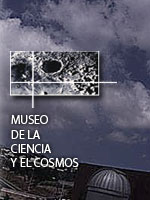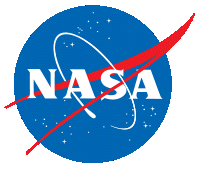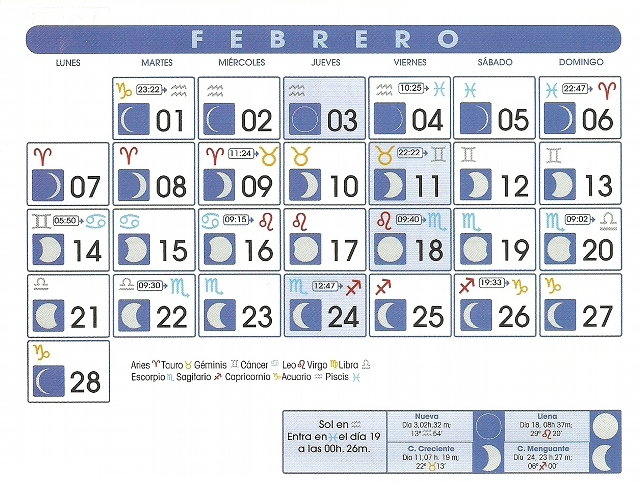The Sky This Month – Enero 2010
If the weather forecasts are accurate, the new year will greet the One-Minute Astronomer with five days of snowfall. So there’ll be no stargazing for us, though we will enjoy a little cross-country skiing.
If you’re starting 2010 under better sky than we are, then you have much to see. This time of year brings drier and more transparent air in the northern hemisphere. That means you’ll get excellent views of the stars of the Milky Way, extending across the constellations Perseus, Auriga, Orion, and south into Canis Major. The Milky extends through the southern skies into Carina, Vela, and Norma, and eventually into Sagittarius.
Perhaps the best view of bright stars is the area around Orion. The
three stars of Orion’s belt are bright, blazing O and B-type stars that
burn at 20,000 degrees or more. These stars are at the center of a
lovely line of celestial sights. Follow the line of Orion’s belt north
and west to see the bright orange star Aldebaran in Taurus, along with
the Hyades star cluster which makes up the V-shape of the head of the
bull. Keep going in this direction to find the twinkling Pleiades,
perhaps the finest sight in the sky for binocular observers. Follow
Orion’s belt in the other direction to Sirius and the fine star clusters
in Canis Major.
If you only have time for a little star gazing, get out your telescope or binoculars to examine the region around the Orion nebula. This regions includes the spectacular “batwing” shape of M42 (see the above image), along with the star cluster NGC 1981 and several fine double stars. It’s hard to tire of the sights in this part of the sky.
For you planet lovers, Mars takes over from Jupiter as the best planet in the sky for observing. The red planet shines red, bright, and steady in the constellations Leo and Cancer this month, not far from the bright star Regulus. You can see Mars from the northern hemisphere and most parts of the southern hemisphere, certainly from South Africa, New Zealand, and Australia.
The planet makes its closest approach to Earth on Enero 27th when it’s 99.3 million km away; it won’t be this close again until 2012. Though this will be nothing like the opposition of Agosto 2003, when Mars came within 56 million km. The planet peaks at magnitude -1.3 this month, just a little fainter than Sirius.
The disc of Mars will have an angular diameter of 14 arc-seconds. That’s big enough to let you see some detail in a small telescope. With a 3-inch or larger scope at 100x or more, you may see some dark surface markings and possibly a white polar cap. But you’ll need steady sky and a fair bit of patience. The disc is quite small compared to, say, Jupiter. Still, if you have a good scope, it’s well worth a try to observe the planet. Anytime between mid-Enero to mid-Febrero will give you the best view.
The Planets
Mars, the red planet, makes its closest approach to Earth this month until 2012.
Mercury is primed for viewing at dawn from Enero 15-30. Look for it low in the southeast from 30-45 minutes before sunrise.
Venus is at superior conjunction (behind the sun). It will emerge in late Febrero and take its place in the evening sky for the next several months.
Earth is at perihelion, it’s closest approach to the sun (147,097,907 km), on Ene. 2
As we’ve mentioned above, Mars puts on the best show this month. It makes its closest approach to Earth on Enero 27. In a small telescope at 100x or so, you’ll clearly see the disc of the planet along with a few surface markings. The planet is at opposition on the 29th, rising at sunset. It’s high enough for observation about 9-10 p.m. local time.
Jupiter. Makes a nice pairing with the waxing crescent Moon low in the evening sky.
Saturn. The ringed planet shines at magnitude +0.7, rising at midnight in the constellation Virgo. The rings are tilted at almost 5 degrees. Well worth a look in a telescope if you’re up before dawn. The planet’s largest moon, Titan, is clearly visible even in the smallest telescope. A larger scope might even reveal the orange color of its hazy atmosphere.
Moon
Last Quarter: Ene. 7 at 10:39 UT
New Moon: Ene. 15 at 7:11 UT
First Quarter: Ene. 23 at 10:53 UT)
Full: Ene. 30 at 6:18 UT
Celestial Events
The Quadranid meteor shower peaks from Ene. 2-4. The radiant of this shower lies in the extinct constellation Quadrans Muralis, where Hercules, Bootes, and Draco meet. The view is best in the far northern latitudes. The bright Moon will obscure all but the brightest meteors this year.
Annular eclipse of the sun (visible from parts of central Africa, across a strip of the Indian Ocean, and into Burma and China), on Ene 15
The moon makes its closest approach to Earth this year on Enero 30. It will lie 356,000 km away, and will appear about 7% larger than average.
Half an hour before dawn on Enero 13, try to spot the thin crescent Moon just one fist-width below Mercury. Binoculars will help. You might even try to snap an astrophoto if you have a DSLR with a telephoto lens.






.gif)


.gif)



